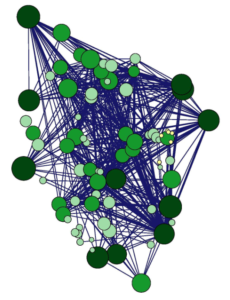Trees and their relationship with fungal networks; are their relationships symbiotic or competition?
Peter Girardi

I just recently listened to the book “Finding the Mother Tree” by Suzanne Simard. I believe Dr. Simard would say it’s more about relationships and less about competition. Even trees of different species use the living fungal network to connect and help each other. I can’t remember if she coined the term or used it in the book, but some people call it the “Wood Wide Web.”
What you will learn from this book:
- Trees need mycorrhizal networks to survive.
- Trees send messages, warnings, and defense chemicals to neighboring trees.
- Mycorrhiza assist trees with water and nutrient uptake.
- Trees share carbon between species through mycorrhizal fungus.
- Plant diversity is key for a tree to survive.
- When preserving trees, it is more important to preserve a larger area with all of the understory and soil versus leaving a single tree.
- Dr. Simard’s reference to the “mother tree” describes how larger trees are linked to vast surrounding areas, and communicate across a forest providing protection to their offspring.

While listening to “Finding the Mother Tree” I began questioning:
- If trees need diversity, should we be surprised when we ask them to survive in a field of a monocrop, like grass?
- If we treat a lawn with fungicides, will it not damage or destroy the fungal network our trees need to survive?
- If we dig a trench across a lawn, do we sever the fungal connections? If so, how long does it take to reconnect?
- Do some root rots that are present in the soil only cause issues with our trees when something is out of balance? For example, Armillaria root rot, phytophthora root rot, or hypoxylon canker; Are they ever present in the air and our soils and only attack when we have damaged our soils?
Why do I bring this up and why did I ask a lot of questions without definitive answers? It seems a similar story is being conveyed in other books I have recently read, including The Overstory by Richard Powers and The Hidden Life of Trees by Peter Wohllenben. In these books, the authors discuss relationships among trees and their surroundings that appear to be fundamental in determining their long-term health, as well as the health of the other organisms in the ecosystem.


